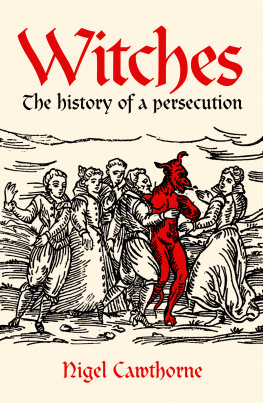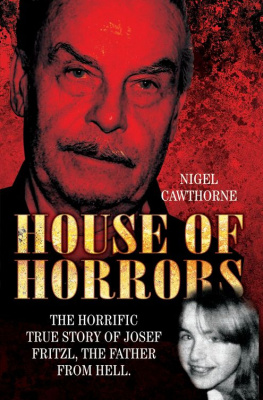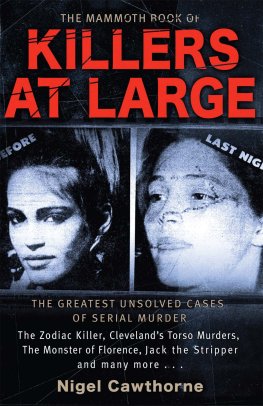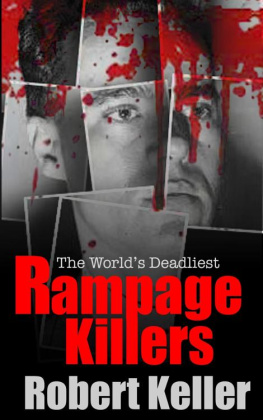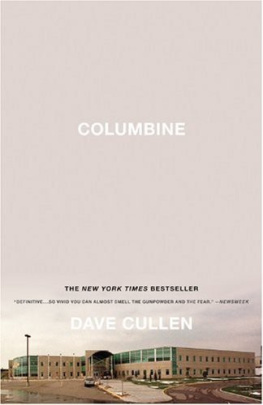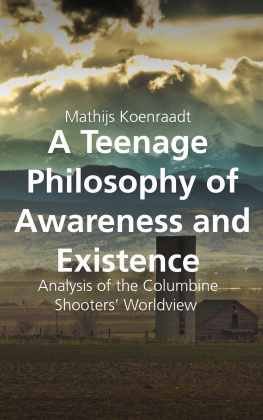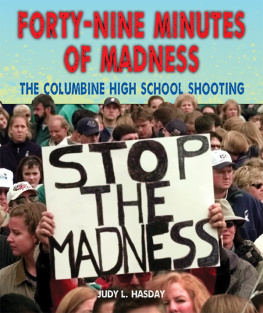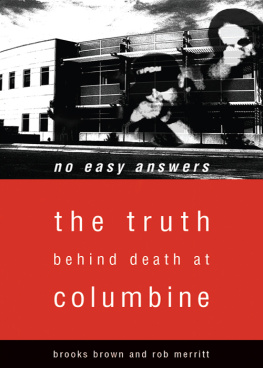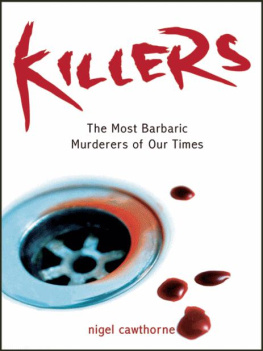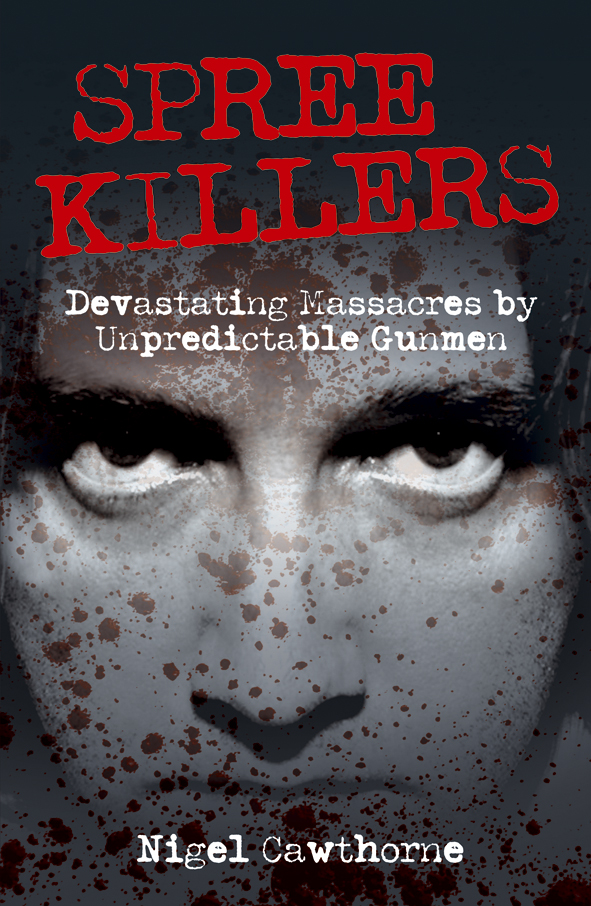All rights reserved.
No part of this book may be reproduced by any means, nor transmitted, nor translated into a machine language, without the written permission of the publishers.
The right of Nigel Cawthorne to be identified as the author of this work has been asserted in accordance with sections 77 and 78 of the Copyright, Designs and Patents Act 1988.
This book is sold subject to the condition that it shall not, by way of trade or otherwise, be lent, re-sold, hired out or otherwise circulated in any form of binding or cover other than that in which it is published and without a similar condition including this condition being imposed on the subsequent publisher.
Substantial discounts on bulk quantities of Summersdale books are available to corporations, professional associations and other organisations. For details telephone Summersdale Publishers on (+44-1243-771107), fax (+44-1243-786300) or email ().
Chapter 1
Opening Shots
On 16 October 1991 thirty-five-year-old George Hennard drove his truck through the plate glass window of Lubys restaurant in Killeen, Texas.
It was lunchtime in Killeen and the diner was crowded. Texas, this is what you have done for me, Hennard shouted as he opened fire with two semi-automatic pistols.
The first victim was a man who had been hit by Hennards truck as it ploughed through the window. He was trying to get up when Hennard advanced on him.
Today is payday, said Hennard as he shot him, point-blank. A child cried: Hes just shot Daddy.
Then Hennard turned on the lunch queue and started picking off the customers one by one. In his blue T-shirt and dark glasses, Hennard had the blank look of the robot from The Terminator , one witness said. It was plain that his intention was to kill everyone. When his guns were empty, he coolly changed the magazines and continued the slaughter. Was it worth it, people? he taunted.
He was heard shouting You bitch at one woman before pumping bullets into her defenceless body. Yet, he showed mercy to another woman. He told Anica McNeil, who was with her four-year-old daughter Lakeichha, to get your baby and get out of here.
Tell everybody Bell County was bad today, he shouted after them as they scuttled to safety. It was the only time he showed compassion. Anicas own mother, Olga Taylor, who was lunching with her daughter and granddaughter, was then coldly gunned down by the killer.
As the massacre continued, seventy-one-year-old retired builder Al Gratia, cowering behind a table, decided that someone had to do something. He got up and walked towards the crazed gunman. A bullet smashed into his chest. Gratias daughter, Susanna, took the opportunity to escape. But his wife, sixty-seven-year-old Ursula, could not leave her dying husband. She too was killed.
Distraught women were hiding under the tables, screaming and crying. Another, hiding in the toilets with her daughter, dodged bullets ricocheting off the walls.
Some managed to escape, thanks to twenty-three-stone car mechanic Tommy Vaughn. He smashed through a back window and let fifteen people scramble to safety as the gunman bore down on them. But those who stayed behind in Lubys were tracked down and murdered by Hennard, who showed all the coolness of a professional executioner.
Fifty-six-year-old Aden McElveen had found himself trapped under Hennards jeep as the gunman advanced on him. He was convinced he was going to be next. Then, ten minutes after the shooting had started, he heard sirens wailing outside. The police ordered Hennard to drop his gun. He refused. The police opened fire. In the ensuing gun battle, Hennard was hit twice. He staggered into the back of the restaurant and turned his gun on himself.
More than a hundred spent cartridges were found among the wreckage of the restaurant. It was a ten-minute orgy of killing that left twenty-three people dead, one of the worst mass shootings in Americas history.
Rescuers found a scene of appalling horror. Bodies lay scattered among a battlefield of upturned tables. The wounded were helicoptered out to an army hospital at nearby Fort Hood.
It was worse than anything I saw in Vietnam, said one medic.
Twelve hours later one of the restaurants employees, Mark Mathews, was found alive, hiding in a dishwasher.
According to some, the killings may have been motivated by a pathological hatred of women. George Hennards mother was highly strung and domineering. He had often talked about killing her. According to a friend, he compared her to a snake, picturing her head on a rattlesnakes body. After the carnage and Hennards death, all she was concerned about was her own tragedy the death of her beautiful son. In a letter to Jill Fritz and Jana Jernignan two sisters with whom Hennard was obsessed he had referred to the abundance of evil women and female vipers in Killeen and his home-town of nearby Belton. Of the twenty-two victims, fourteen were women.
Spree killing at first seems to be a curiously twentieth-century phenomenon, in fact late twentieth century. And yet it can be argued that the great Mongol ruler, Genghis Khan, was a life long spree killer. Between 1206 and 1227 he killed an estimated twenty million people that is nearly a million people a year and around one-tenth of the worlds population at the time.
Born in 1162, he was the son of Yesugei, the chief of a small, impoverished Mongol clan. Orphaned at thirteen, the young Genghis Khan his name meant universal ruler began his career in casual butchery by murdering his brother over a fish. In the spring of 1206, at the age of thirty-three, Khan established his rule over all the Mongol tribes and, in 1211, he began his legendary conquest of imperial China, burning and pillaging every city and village that stood in his way. Three years after his invasion, the Mongol hordes controlled the entire country north of the Yellow River and Khan forced the Kin Tartars to deliver to him 500 young men and women, plus 3,000 livestock, as the price of peace.
To the west lay the kingdom of Khwarizm, the vast territory between the Ganges and the Tigris rivers, covering what today is India and Iran. Khan promised the ruler of Khwarizm, Shah Mohammed, peace and favourable trade agreements. But the Shahs answer was to murder a caravan of one hundred Mongol traders near the border town of Otrar. Khan sent more envoys, but they too were murdered. Khan did not try and make peace again. Between 1218 and 1222 Khans armies swept through Khwarizm, killing 400,000 enemy troops who stood in their way. The governor of Otrar was executed by having molten metal poured in his eyes and ears. In Bukhara the defeated inhabitants were ordered outside the city walls and forced to watch their women being raped.
In May 1220 the Mongol armies reached as far west as Samarkind, where they defeated a garrison of 50,000 men. Most of the defenders were murdered for refusing to surrender their city. And at Termez every dead body was torn open by Khans men after one old woman had swallowed her pearls to prevent them falling into the hands of the marauders. Genghis Khan took no prisoners. He would stack the severed heads of his victims in bloody pyramids.



